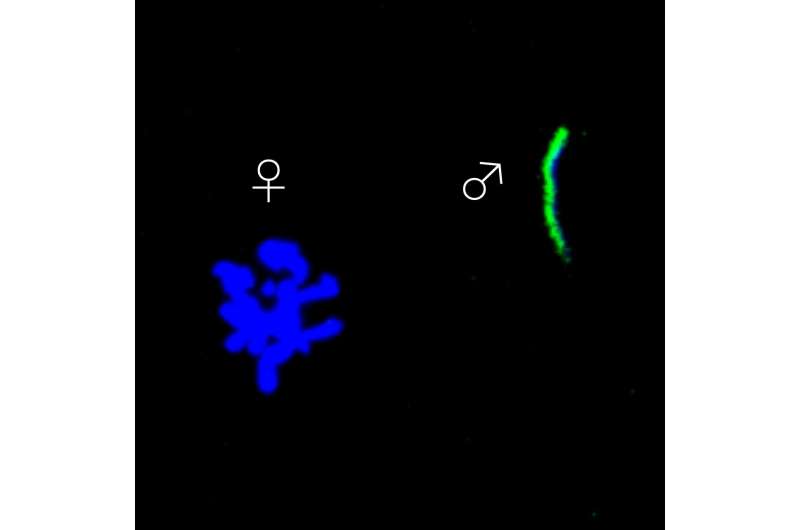A protein that promotes compatibility between chromosomes after fertilization

A research team from the Center for Biomedical Research (CBMR), at the University of Algarve (UAlg), and Instituto Gulbenkian de Ciência (IGC), led by Rui Gonçalo Martinho (UAlg) and Paulo Navarro-Costa (UAlg and IGC) has identified the mechanism by which the fertilized egg balances out the differences between chromosomes inherited from the mother and the father. The study, now published in the scientific journal EMBO reports, may pave the way for future developments in the clinical management of infertile couples.
The fertilization of an egg by a sperm cell marks the beginning of a new life. However, many of the molecular mechanisms behind this extraordinary process remain a mystery. It is well known that mother and father pass on their genetic information in a different manner. While the maternal chromosomes in the egg are still undergoing division, the paternal chromosomes carried by the sperm have both completed their division and been substantially compacted to fit into the small volume of the sperm cell. The mechanisms through which the fertilized egg levels these differences between parental chromosomes—an essential aspect for the correct initiation of embryo development—are largely unknown.
The close partnership between the University of Algarve and IGC teams uncovered a protein called dMLL3/4 that allows the fertilized egg to ensure both the correct division of the maternal chromosomes and the unpacking of the paternal genetic information.
" dMLL3/4 is a gene expression regulator, therefore, it has the ability to instruct cells to perform different functions. We observed that dMLL3/4 promotes, still during egg development, the expression of a set of genes that will later be essential for balancing out differences between the chromosomes inherited from the mother and from the father," explains Paulo Navarro-Costa. "These results open the door to new diagnostic approaches to female infertility, and to possible improvements in embryo culture media formulations for assisted reproduction techniques."
Co-author Rui Martinho says, "The dMLL3/4 protein was identified using fruit flies (Drosophila melanogaster) as a model organism, which again reinforces the importance of basic research and the use of model organisms as critical stepping-stones for translational research and the improvement of human health."
More information: Pedro Prudêncio et al, The Trithorax group protein dMLL3/4 instructs the assembly of the zygotic genome at fertilization, EMBO reports (2018). DOI: 10.15252/embr.201845728
Journal information: EMBO Reports
Provided by Instituto Gulbenkian de Ciencia





















